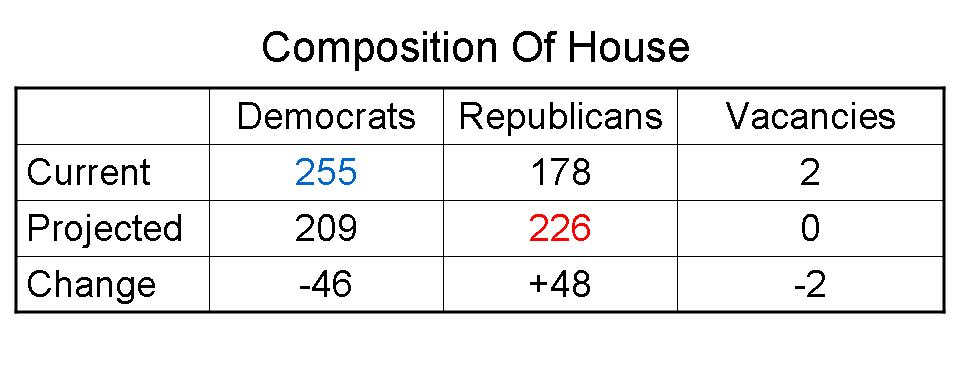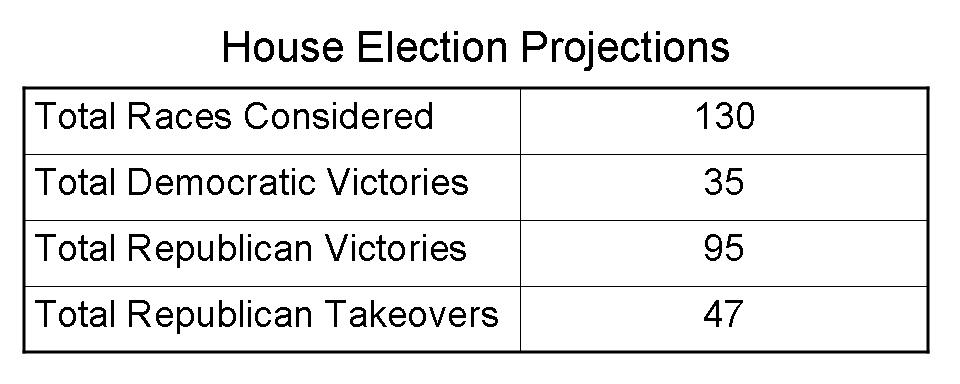Editor’s Note: This article was adapted from columns that appeared in the Current Commentary section of our Web site, www.palisadeshudson.com, on Feb. 17 and Feb. 24. We invite readers to subscribe to our daily commentaries via email and Twitter, and to submit responses online or via email to sentinel@palisadeshudson.com.
Despite the problems stemming from the one-year lapse of the estate tax that Eric Meermann describes in this issue’s cover story, don’t expect a quick response from Congress.
Resurgent Republicans are likely to do everything possible to delay action until after the November elections, which could redraw the political map. This year’s political math indicates that the GOP has a chance to recapture majorities in the next Congress, especially in the House of Representatives.
All 435 House seats are up for grabs in November, along with 36 of the 100 seats in the Senate. Though the president’s party usually loses seats in a midterm election, Democratic control of Congress seemed unassailable as recently as last fall. But since then, victories in Virginia and New Jersey gubernatorial races and January’s special Senate election in Massachusetts have shown that the Republicans have a strong current running in their favor.
The big question is whether the Republicans, who lack strong leadership and are divided over how vigorously to press conservative social causes, can take advantage of the Democrats’ weakness. Enough seats are realistically winnable for Republicans that they could potentially gain control, if they can just muster the organizational prowess to run strong races for those seats.
Let’s look at the Senate first. Currently, Democrats hold 57 Senate seats, and they usually have the support of the two independents, Bernard Sanders of Vermont and Joe Lieberman of Connecticut. That gives them a 59-41 edge over Republicans coming into the elections.
Five incumbent Democrats are not seeking re-election this year. I expect Republicans to take four of those seats. Only Connecticut, where Democratic Attorney General Richard Blumenthal is expected to get the nomination for Chris Dodd’s seat, looks safe for the incumbent’s party.
Six Republicans are vacating Senate seats this year, but the GOP should be able to hold five of those. Only the seat held by Judd Gregg in New Hampshire is, in my opinion, in play. It’s not a sure thing for the Democrats, but we’ll assume they can take it. The net effect is that Republicans should pick up three seats in the retirement pool.
Fourteen Democratic incumbents are seeking re-election in 13 states. New York has two races because Charles Schumer is up for re-election and Kirsten Gillibrand, who was appointed to replace Secretary of State Hillary Clinton, must now go before the voters. With all the Democratic bashing of Wall Street this year, both of New York’s seats could be vulnerable, but at this writing, no strong Republican candidates have emerged.
Elsewhere, however, a lot of Democratic senators are in trouble. The endangered species list includes Senate Majority Leader Harry Reid (Nevada), Blanche Lincoln (Arkansas), Michael Bennett (Colorado) and Arlen Specter (a recently converted former Republican from Pennsylvania). Four other senators are threatened, but not on the edge of extinction. I expect Republicans to wipe out the endangered group and defeat at least half of the threatened candidates, which would swing six more seats to the GOP.
On the Republican side of the aisle, a dozen incumbents are seeking re-election. Some, such as Arizona’s John McCain, may have trouble surviving primary challenges in their own party. But all of these seats are in deep-red states, and I do not see Democrats realistically winning any of them in the current environment.
So we stand at a projected gain of nine Republican seats, assuming Democrats can take Gregg’s seat in New Hampshire. A nine-seat change would create a 50-50 split, with Vice President Biden, who acts as Senate president, having a potential tie-breaking vote. If Republicans can pick up Gregg’s seat, they might eke out a tiny majority. It is not the most likely outcome, but it is not impossible, either.
In the House races, it is too early to take a close district-by-district look to get a feel for November’s likely results. There is too much uncertainty about which incumbents might vacate their seats and which candidates will emerge from party primaries.
So, for now, I am taking a top-down approach that looks at the general political environment and tries to apply it to the recent voting patterns in each congressional district. In any given district, this approach is likely to be error-prone, because it does not take into account individual candidates’ strengths and weaknesses or local conditions. But when averaged over the entire country, particularly the 130 or so districts that analysts expect to be competitive, I believe it can generate a reasonably accurate picture. It all depends on how realistic my assumptions turn out to be.
I assume Democrats will win most races in districts where a Democratic incumbent is running and President Obama won by a large margin in 2008. I also assume that districts that strongly supported Obama, but where a current Democratic representative has decided not to seek re-election, will be somewhat less likely to select a Democrat. Because of the Democrats’ current weakness, I am predicting that any district that supported McCain for president or that currently has a Republican representative will elect a Republican.
If my assumptions are accurate, Democrats will win 35 of the 130 competitive races, while Republicans will win 95. Forty-seven seats currently in Democratic hands will switch to red. This would be more than enough to tip the balance of power.
Click here for a detailed chart of my assumptions and predictions.
The House of Representatives has 435 voting members. Currently, Democrats hold 255 of those seats and Republicans hold 178. As of early this year, two were vacant and were to be filled by special elections this spring. Based on the districts’ 2008 presidential votes, I expect that one of the vacant seats will go to a Republican while the other will go to a Democrat, adding one seat to each party’s total.
If all my predictions come true, there will be 209 Democrats and 226 Republicans in next year’s House.
Election Day is still a long way off. Democrats could benefit from a stretch of good economic news, from a breakthrough in the health care logjam or simply by keeping the House races focused on local candidates rather than allowing each one to become a referendum on President Obama or House Speaker Nancy Pelosi.
But there is a clear trend, and the Republicans are benefiting from it. A majority in at least one chamber of Congress appears to be within reach, if the GOP can grab it.








